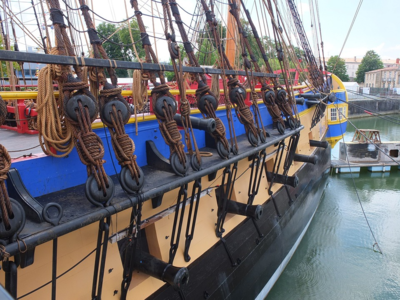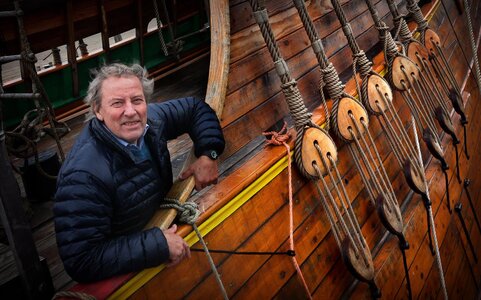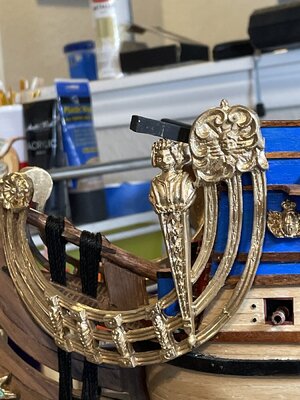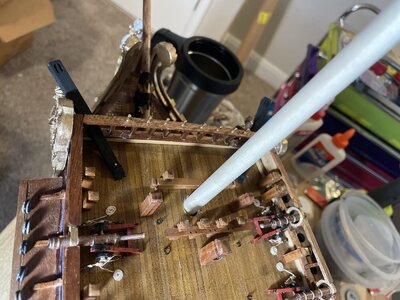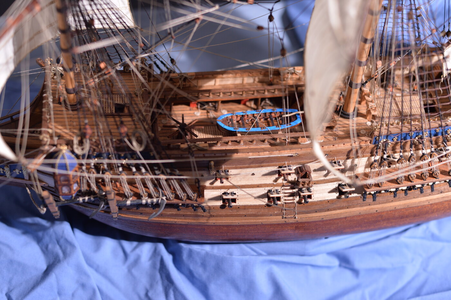I have seen really dark lanyards on the deadeyes, and light brown ones. Since the lanyards are part of the standing rigging, and not often adjusted, it seems logical that they could be coated with at least one coating of wood tar to protect them. Brown or tan would be my choice over unprotected worn out gray for the lanyards. USS Constitution's lanyards look black, which is different than what you'd find on an early 17th century vessel. Uwe is right about the ratlines being brown or gray. It comes down to this: we rarely know what was on a specific vessel, so we have to make a choice among several possible colors. That's where the personal preference takes over, when the research still doesn't provide a hard answer.
Here's a thought. Look at the model and see of the overall appearance (other than the blue) is one color, say medium brown. If your ratlines or lanyards were the same color, they may blend in too well, making the detail harder to see. A slightly darker or lighter color variation will make them stand out, making the detail easier to see, and the model won't look like it is made in only two colors, brown and blue, but a blend of many.
Example. My first model has an overly large use of the same tones of brown, and although that looks similar to a real ship, it makes details hard to pick out. As models go, it appears rather dark. The light maple on the sides of the ship was used because I had no research source information on that feature at all and went with what Corel instructed. The lanyards for the shrouds were chosen to be light tan, like the rest of the running rigging, and they stand out better. This is the visual effect, it has a lot of contrast to the hull and channels. Note that I chose dark brown for the ratlines, and they blend in more with the shrouds. In actuality, I should have chosen thinner line for both shrouds and ratlines at this scale, but I digress. If you want the lanyards to blend in more, go with a darker brown. You're still within the realm of accurate colors.
View attachment 306648
